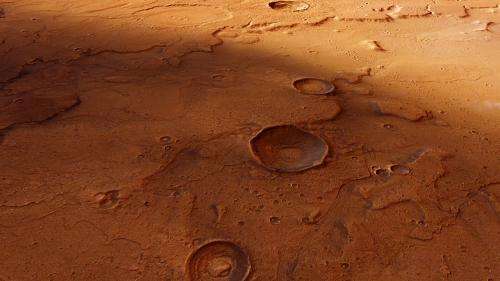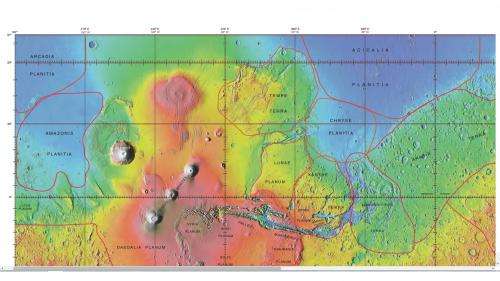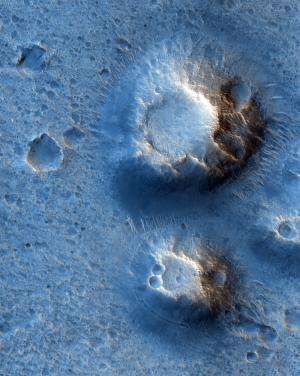Mars scientists capture image of sci-fi landing site

Images taken by the UA-led HiRISE mission reveal that the setting of the best-selling novel "The Martian" is far from being the featureless plain described in the book.
Mark Watney, the hero featured in the best-selling book "The Martian" by Andy Weir, becomes marooned on Mars after his crewmates scramble to make an emergency departure following a dust storm tearing through their base. In his struggle for survival, Watney sets out to get to the landing site of "Mars Pathfinder," a robotic NASA spacecraft consisting of a lander and a rover that explored the surface of the red planet in 1997 in order to obtain a means of communicating with Earth.
Using the HiRISE camera aboard NASA's Mars Reconnaissance Orbiter, which has been examining Mars with six instruments since 2006, the team acquired images of a large region on Mars called Acidalia Planitia, which includes the site where Watney's crew touched down in their spacecraft named Ares 3.
"Stranded astronaut Mark Watney spends most of his time at the Ares 3 landing site in southern Acidalia Planitia," said Alfred McEwen, a professor in the University of Arizona Lunar and Planetary Laboratory and principal investigator of the HiRISE mission. "The book describes Acidalia as flat and easy to drive over—he even drives (a rover) to the Pathfinder landing site and back."

However, as the HiRISE images revealed, this region of Mars is actually far more diverse, interesting and hazardous to drive over than depicted in the novel, according to McEwen.
Taken from an altitude of about 294 kilometers, or 182 miles, the image shows an area close to the Ares 3 landing site as shown in a map in the beginning of the novel. Many mounds are visible, including two large, crater- or volcano-like features that dominate the image. The mounds in the picture probably are ancient volcanoes, created by interactions between lava and water, or perhaps formed from the eruption of muddy sediments.
"We take images of this region because we want to get higher resolution of the region to better understand if these are indeed old volcanoes," said Ari Espinoza of the HiRISE mission team. "The image was acquired as a 'routine' image, not necessarily based on the book. However, the reason for our caption does come from the book. So, it's really just fortuitous: one of those 'Here's the Hollywood version, but what does it really look like?' kind of things."

"Much of Acidalia Planitia is covered by dense fields of boulders up to several meters high that would be difficult to drive around," McEwen said. "There are also fissures associated with giant polygons, with steep rocky slopes that would be impassable. There are elongated fields of dense secondary craters where the surface is extremely rough at scales near the size of the rover."
When Watney travels into Arabia Terra, it is described as much rockier than Acidalia, but the opposite is generally true: Much of Arabia is dust-mantled and smooth at the scale of a rover.
"People commonly assume that 'smooth' at the large scales of kilometers means 'smooth' at small scales like meters to tens of meters," McEwen said. "We frequently see the opposite on Mars: Large, flat, low areas are more wind-scoured, removing fine materials and leaving rocks and eroded bedrock."

Provided by University of Arizona





















